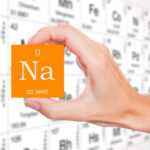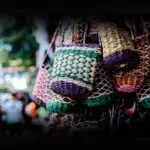Wave All Your Fingers At Your Neighbor Day is celebrated every year on February 7 in the United States. The holiday serves to encourage friendship between neighbors. Waving is a universal gesture. It is a good way to get someone’s attention and start a conversation. A friendly wave is an easy way to show love, respect, and appreciation. A small wave can make a person feel seen and appreciated. Wave All Your Fingers At Your Neighbor Day is a holiday that fosters love and friendship.
History of Wave All Your Fingers at Your Neighbor Day
Wave All Your Fingers At Your Neighbor Day is observed every year on February 7. It helps to encourage more people to show love to the people around them. Waving is a nonverbal gesture of communication. It is a way of greeting understood around the world. The purpose of waving can be to acknowledge another’s presence, to say goodbye, to call for silence, or deny someone.The origin of waving can be dated as far back as the 18th century. Waving at that time was a way of saluting. Knights would show they come in peace by revealing their identities and saluting. The wave of the hand was also a way to show they were not holding weapons. European armies formalized the action of saluting in the 1780s. It became a proper way of addressing people in a military setting. Waving a handkerchief was a way to show approval or excitement. It was also a way to call attention to the deaf.There are different types of waves. There is the standard side-to-side wave, arm wave, palm wide wave, finger wiggle wave, ‘flirtatious’ wave, open-and-close finger wave, and the Miss America wave, to name a few. You can do any of these on Wave All Your Fingers At Your Neighbor Day. Have fun showing love and appreciation to the people around you by waving. You may be surprised how much the simple gesture of waving can brighten someone’s day.
Wave All Your Fingers at Your Neighbor Day timeline
Waving begins during to take place as a friendly gesture.
Saluting is formalized by European armies.
People wave handkerchiefs to show excitement or call someone’s attention.
In modern American culture, waving is used as a greeting.
Wave All Your Fingers at Your Neighbor Day FAQs
Do gestures show mood?
Hand gestures can be used to show a person’s mood or attitude towards someone or something.
Do blind people wave?
People who are blind are likely to use hand gestures to communicate.
Do we learn from gestures?
We learn from the gestures we see and produce.
Wave All Your Fingers at Your Neighbor Day Activities
-
Wave at your neighbors
You can take part in the holiday by waving at the people around you. It is a friendly gesture that makes people happy.
-
Make a friend
Start a conversation with someone you have seen around but haven’t spoken to. You might get a new friend out of it.
-
Do something nice
Do something nice for someone around you. Enjoy the feeling of making someone else happy.
5 Fun Facts About Hand Gestures
-
Gestures are natural
Humans start gesturing from birth.
-
It is used for directions
People use hand gestures to give directions.
-
They replace words
Hand gestures are used when a person can’t find the right words.
-
They are used for emphasis
Hand gestures can be used to emphasize or exaggerate a point.
-
It shows openness
Hand gestures are a universal way to show openness and honesty.
Why We Love Wave All Your Fingers at Your Neighbor Day
-
It creates unity
The holiday encourages more people to engage with one another. This leads to unity among people.
-
It makes people happy
Waving can be a small and easy way to make someone happy. It makes them feel included.
-
It creates awareness
The holiday spreads information about the benefits of friendly interactions. People learn what a simple wave can do.
Wave All Your Fingers at Your Neighbor Day dates
| Year | Date | Day |
|---|---|---|
| 2023 | February 7 | Tuesday |
| 2024 | February 7 | Wednesday |
| 2025 | February 7 | Friday |
| 2026 | February 7 | Saturday |
| 2027 | February 7 | Sunday |








































